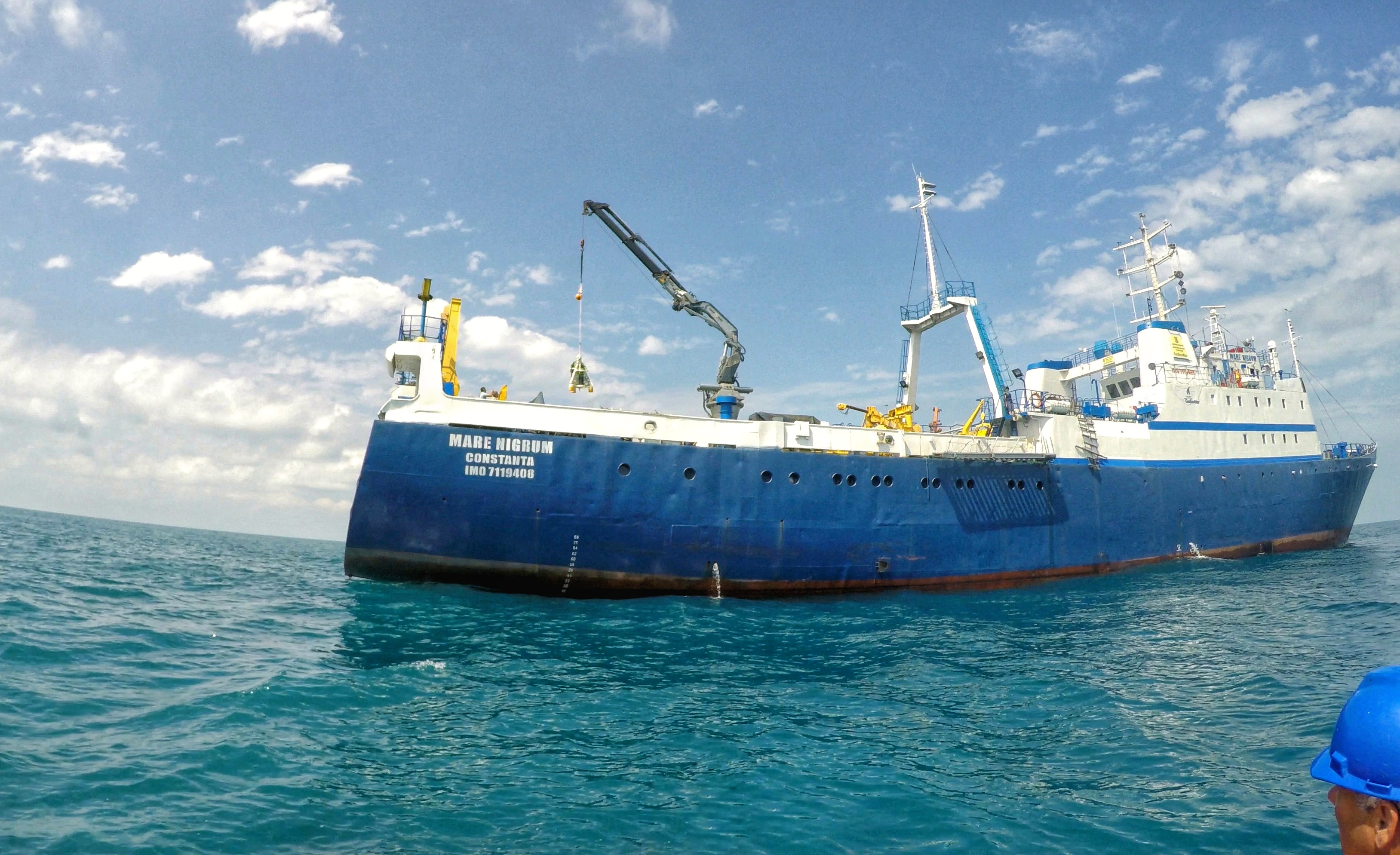On 24-28 September 2019, during the Romanian Black Sea offshore cruise, for regular maintenance of the EMSO ERIC Black Sea Node infrastructures, the recovery of abyssal multiparametric stand-alone observatory EMSO-003 was successfully carried out.
INGV and GeoEcoMar cooperates with the main aim on the relationships between the geochemical features of fluids vented at the seafloor and the tectonic settings of the study areas. Common activities started in the mainframe of the H2020 ENVRI PLUS project, thanks to the pilot experiment carried out in the Black Sea, focused on tracing the methane release from the seabed to the atmosphere.
The scientific cruise, performed in early April 2019, was undertaken with R/V “Mare Nigrum” in the Romanian sector of Black Sea, also involving the European research infrastructures EMSO, ICOS, EUROFLEET, ACTRIS represented by the research institutes INGV, IFREMER, IGE, LSCE-CEA/CNRS, GeoEcoMar.
During the cruise, the multidisciplinary EMSO-003 observatory was deployed for a 4-day data collection and after recovered and re-deployed for a three month period. The collected data include: passive acoustics, pH, dissolved CH4, Temperature, Conductivity, Pressure, Turbidity.
The final recovery was carried out late September, allowing the retrieve of the June-to-September second deployment acquired data. The six month high-resolution data series will help to deeply investigate the phenomena governing marine methane transfer (one of the most powerful greenhouse gases) from the seafloor to the atmosphere, and, moreover, how it evolves in time, possibly triggered by local tectonic activity.




